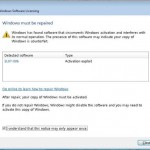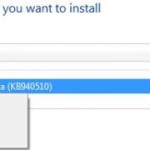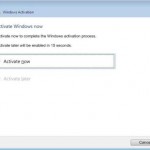Windows Vista Service Pack 1 includes code enhancements in activation infrastructure and the Windows Genuine Advantage to fix two anti-piracy loophole vulnerabilities, and can detect, and then disable and kill two type of the most common Windows Vista activation cracks or exploits which hackers used as a workaround to bypass the activation process and fool the WGA validation to always genuine in Windows Vista, namely OEM BIOS and Grace Timer and their variants.
“We know that Windows Vista is a lot harder to counterfeit than Windows XP, but we also know that pirates will keep trying. We currently see two primary types of exploits pirates often use to generate counterfeit versions of Windows Vista. One is known as the OEM Bios exploit, which involves modifying system files and the BIOS of the motherboard to mimic a type of product activation performed on copies of Windows that are pre-installed by OEMs in the factory. Another is called the Grace Timer exploit. This exploit attempts to reset the “grace time” limit between installation and activation to something like the year 2099 in some cases. Implementing exploits involves extreme alterations to key system components and can seriously affect system stability. So we are taking action. SP1 will include updates that will target those exploits and disable them.” Said Mike Sievert, Corporate Vice President, Windows Product Marketing during interview with PressPass (dead link).
Many hackers have anticipated Microsoft to address the activation bypass issues using 2099 trick or grace timer exploits as called by Microsoft, and in fact, surprised why it took so long for Microsoft to respond to the Grace Timer hack to make the trick useless. Stake is higher for OEM BIOS exploit, as it’s currently the only near perfect best Windows Vista activation exploits that are available, which emerged since April 2007 to simulate OEM Windows Vista activation. If Windows Vista SP1 has its way, these two exploits and cracks to bypass activation and validation in Windows Vista will be detected, disabled, removed and rendered useless.
However, Microsoft doesn’t provide specific on which or both OEM BIOS the SP1 update can detect, as currently there are hardware based OEM BIOS mod and software based OEM BIOS emulation such as Vista Loader and Paradox OEM BIOS Emulator, which is the base exploit used by most activators.
A lot of Windows Vista customers have been unhappy with the overly jealous the way Windows Vista’s Software Protection System and the compulsory WGA checks worked, as there were high rate of false positive bugs in the systems that would deem validly purchased copy or legitimate versions of the OS invalid. Thus, these exploits to bypass the system piracy checks is not used for nefarious purposes by those who purposely don’t want to pay and want to commit stealing crime, but also for users who were frustrated and fed up by activation and validation system errors, which in the case of Windows Vista without SP1, will stop many user functionalities and render the system useless.
Anyway, in return for the tighten anti-cracks measure, SP1 removes reduced functionality mode (RFM) from Windows Vista. Thus, if you have activated Windows Vista with Grace Timer hack or OEM BIOS activation, and been detected by Windows Genuine Advantage Validation check, there will not be dire consequences other than persistent and frequent nag screens and black desktop background.
How to avoid been detected? Or doesn’t want the activation crack to be invalidated? It’s possible, by opting not to install the Windows Vista Service Pack 1 (SP1) update when it’s released. Any user who chooses not to install the SP1 update would not be affected by changes above.






